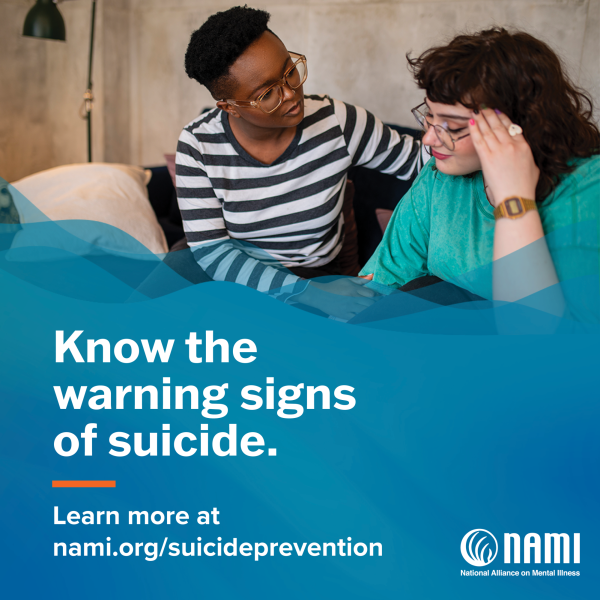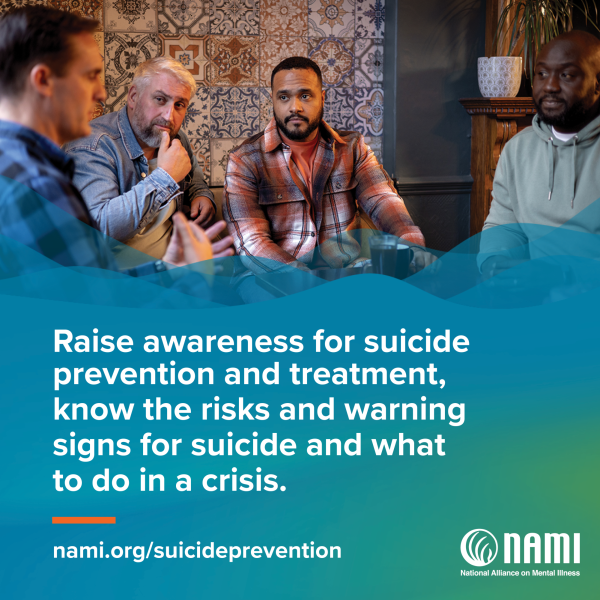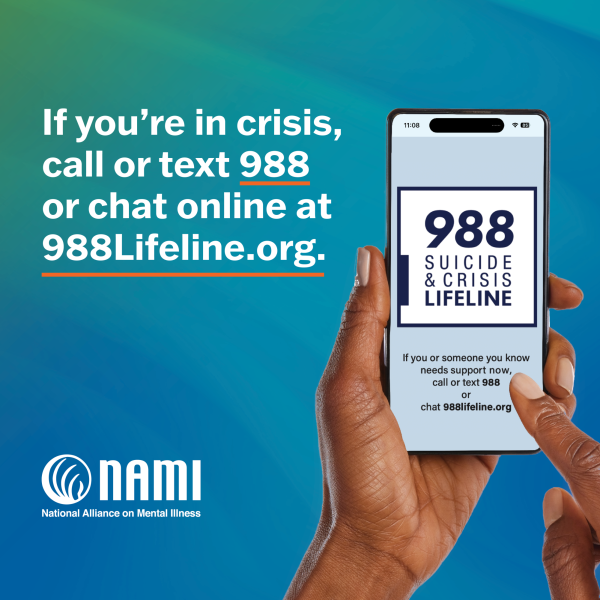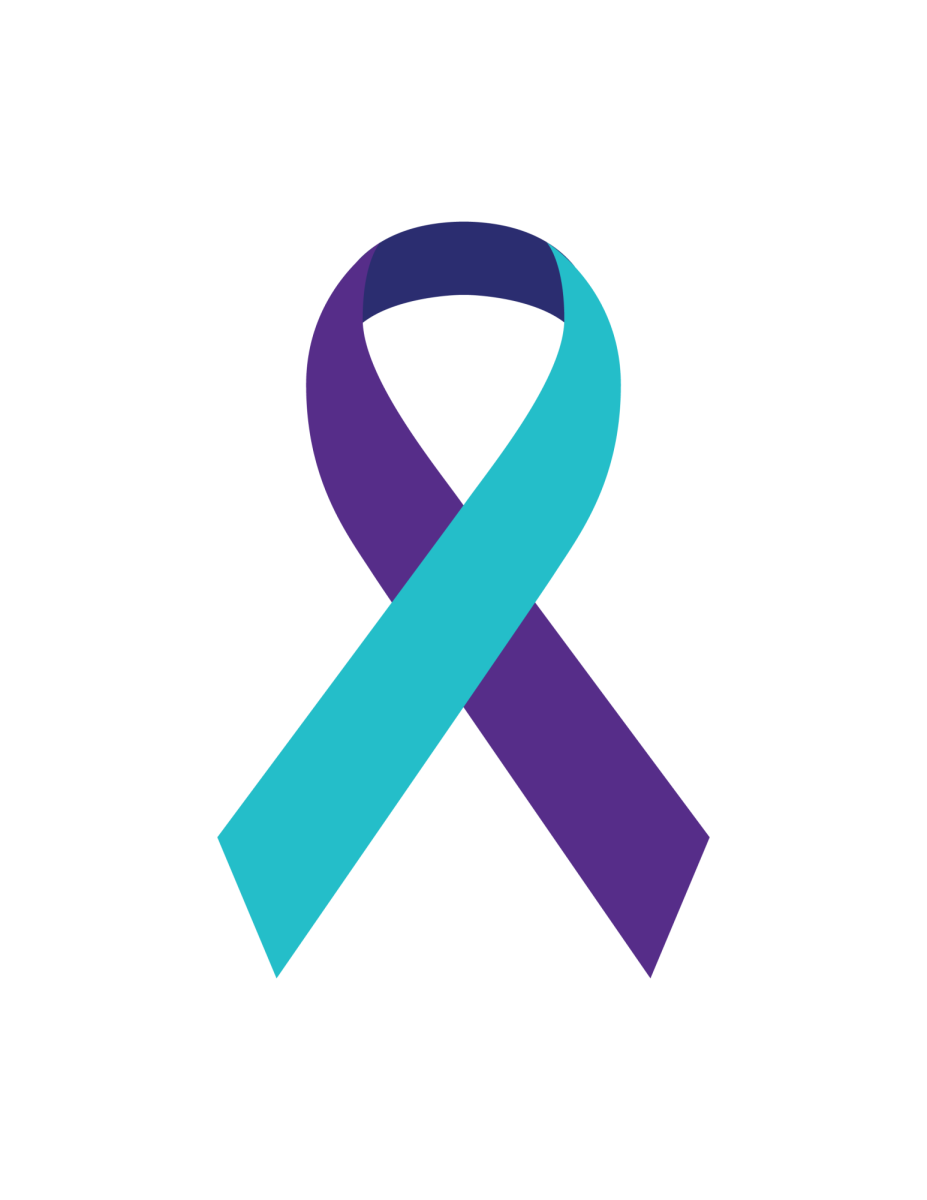September is Suicide Prevention Month. Suicide is a public health issue, but also a very personal issue that impacts so many of us.
While suicide prevention is important to address year-round, Suicide Prevention Month provides a dedicated time to address this difficult topic. While our culture has made significant strides toward openly discussing and spreading mental health awareness, there is still a stigma on the topic. The truth is, we can all benefit from honest conversations about mental health conditions and suicide because just one conversation can change a life.
With this, it is important to discuss how wide-reaching suicide is as a problem. According to the CDC, suicide was responsible for 49,476 deaths in 2022, which is about one death every 11 minutes. The number of people who think about or attempt suicide is even higher. In 2022, an estimated 13.2 million adults seriously thought about suicide, 3.8 million planned a suicide attempt, and 1.6 million attempted suicide.
The National Alliance on Mental Illness provides even more details on the individual and community impact.
Individual Impact:
- 79% of all people who die by suicide are male.
- Although more women than men attempt suicide, men are four times more likely to die by suicide.
- Suicide is the second leading cause of death among people aged 10-14, the third leading cause of death among those aged 15-24 and the 12th leading cause of death overall in the U.S.
- 46% of people who die by suicide had a diagnosed mental health condition — but research suggests that 90% may have experienced symptoms of a mental health condition.
Community Impact:
- Annual prevalence of serious thoughts of suicide by U.S. demographic group:
- U.S. Adults: 4.8%
- Native Hawaiian/other Pacific Islander: 7.4%
- Mixed/Multiracial: 8.2%
- American Indian/Alaska Native: 8.5%
- Young adults aged 18-25: 13%
- High school students: 22%
- LGBTQ youth: 41%
- The highest rates of suicide in the U.S. are among American Indian/Alaskan Natives, followed by non-Hispanic white people.
- Lesbian, gay and bisexual youth are four times more likely to attempt suicide than straight youth.
- Transgender adults are nearly nine times more likely to attempt suicide at some point in their lives compared to their peers.
- Suicide is the leading cause of death for people held in local jails.

In Indiana, suicide is the eleventh leading cause of death and the second leading cause of death for Hoosiers between the ages of 10 and 34 years.
In 2020, the Indiana Youth Institute reported that the percentage of Hoosier middle and high school students who considered attempting suicide ranged from a low of 11.8% (or 1 in 9 sixth-grade students) to a high of 19.3% (or 1 in 5 tenth-grade students). In addition, results from SAMHSA’s National Survey on Drug Use and Health estimates that 262,000 Hoosiers ages 18 years and older had serious thoughts of suicide during 2017-2018.
Indiana’s suicide rate has been higher than the national suicide rate since 2000, and its rate in 2017 was the highest suicide rate observed in Indiana in over five decades. Over 1,000 Hoosiers have been lost to suicide every year since 2016, and Indiana is in the top 10 of U.S. states showing the largest percentage increase in deaths by suicide among 10-24 year-olds between 2007 and 2018.
With all the information about suicide out in front of us, it’s importaint to talk about how to continue to conversation about suicide.

“Individuals are scared to talk about suicide,” said Aaron Pryor, assistant director of Counseling and Psychological Services. “It’s almost like a dirty little secret people are scared to talk about.”
Pryor said that people who openly talk about suicide with others are less like to go through with it.
“If you are talking to somebody and if you think they are having a hard time or considering suicide, you should reach out and show support,” he said.
Pryor shared information about The Columbia Protocol. This includes built-in questions that help ensure the right questions are asked in critical moments when discussing suicide with people who are showing signs.
Pryor said the best thing to bring in when discussing suicide is the idea of hope.
“The idea of a better, brighter future,” he said. “These feelings are a part of the human experience, and there are people who want to help make things easier.”

CAPS is located in FC 302 in the Recreation, Fitness and Wellness Center. You can book an appointment through their website or by calling (812) 464-1867.
Locally, there is the Southwestern Crisis Mobile Response Team. There are services that allow you to message or call in an emergency.
Otherwise, if you or someone you know is thinking about suicide and seeking emotional support, there are crisis lines available through phone, chat or text:
- 988 Suicide & Crisis Lifeline
- National Suicide Prevention Lifeline: 800-273-8255 (TALK)
- National Suicide Prevention Lifeline Online Chat Services
- Crisis Text line: Text IN to 741741 for free, 24/7 crisis counseling.
- Trevor Project Lifeline (confidential suicide hotline for LGBTQ+ youth): 866-488-7386
- TrevorChat
- TrevorText: Text START to 678-678.
- Veterans Crisis Line (for military service members, veterans, and family): Call 800-273-8255 and press 1
- Text 838255
- Support for deaf and hard of hearing: 800-799-4889
- Homeless Veterans Chat
- Youthline



